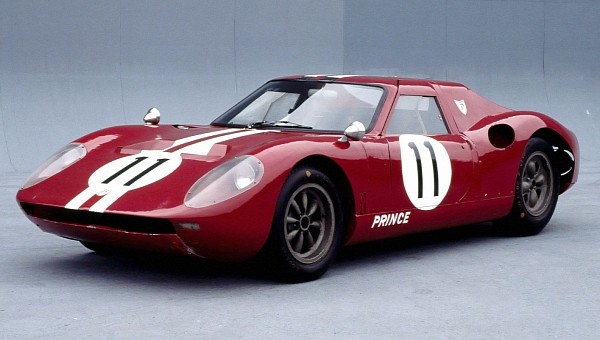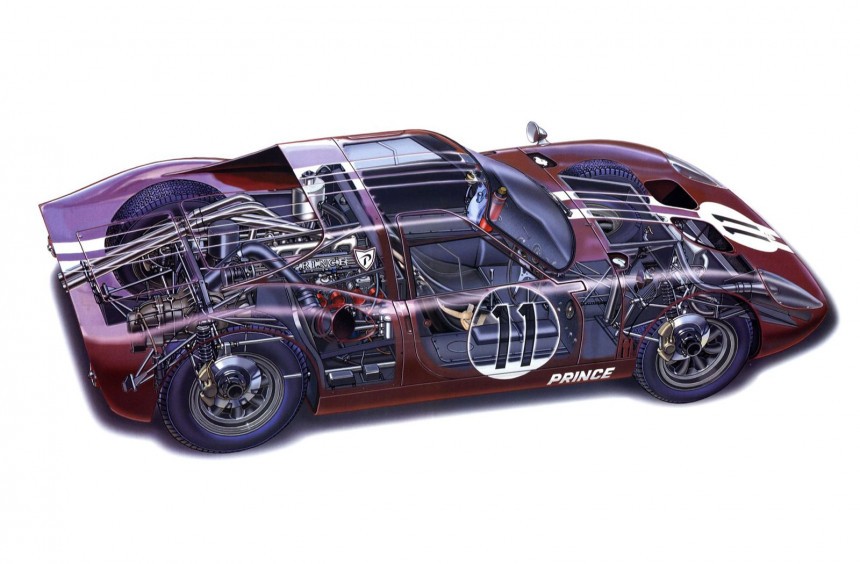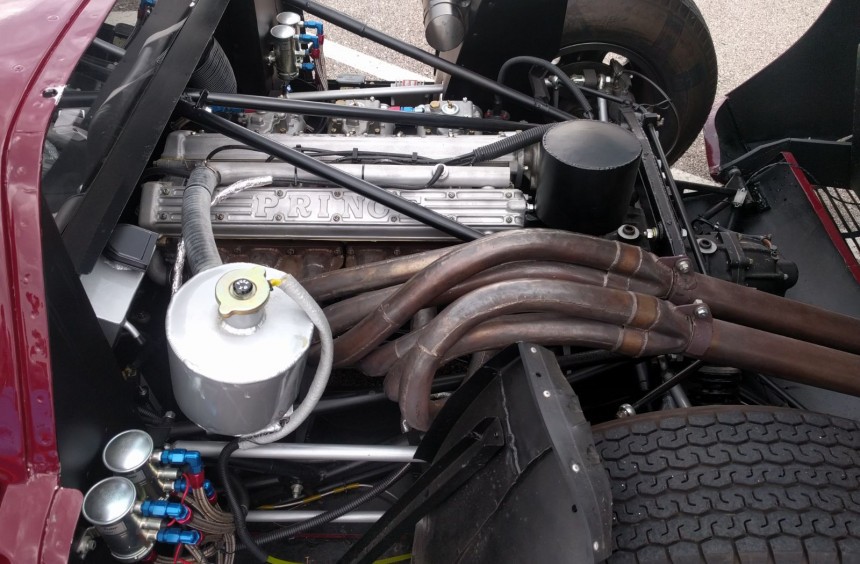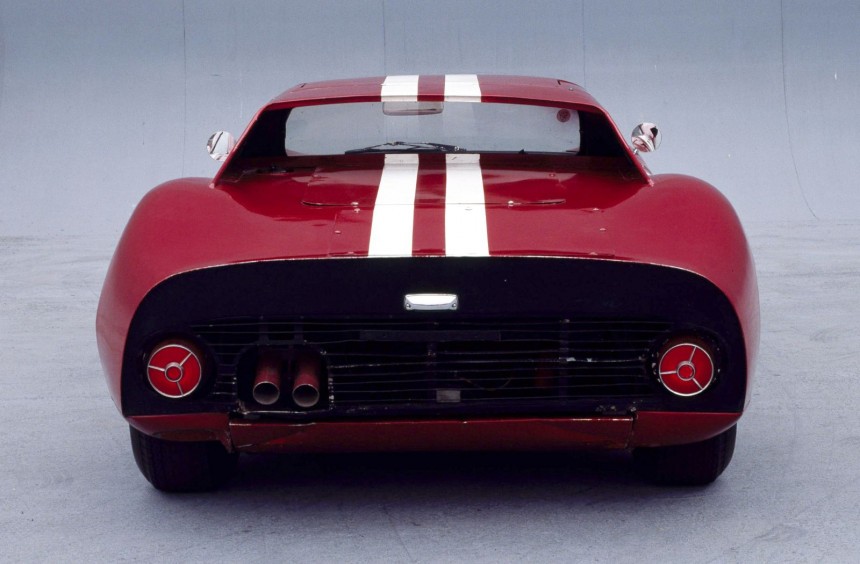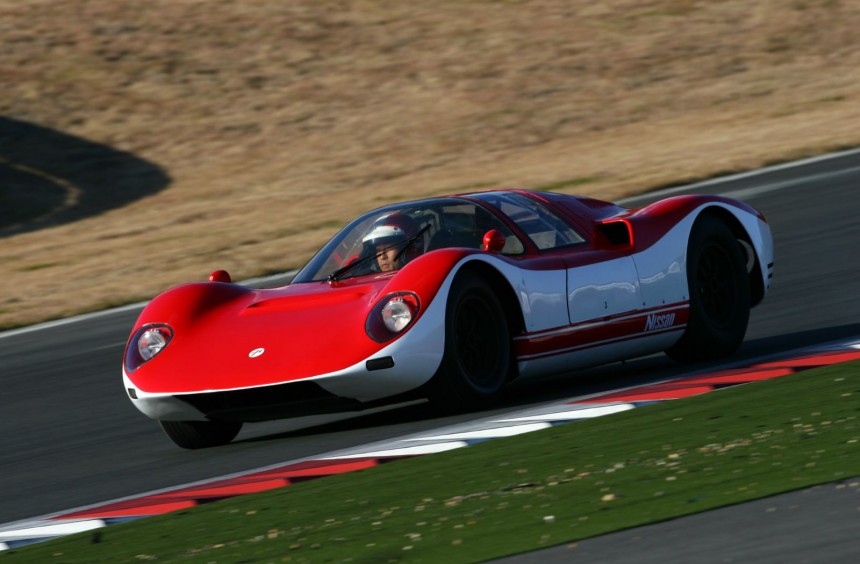Part of Japanese racing royalty, the Prince R380 was the country’s first purpose-built race car. Moreover, its engine, slightly modified for street use, powered the first two iterations of the legendary Skyline GT-R.
During the 1950s, nobody would have ever thought that Japanese manufacturers would become major automotive industry players, let alone some of the biggest names in motorsport. The country was rebuilding and the new cars that came out were far from spectacular. Most of them were small, cheap, and underpowered vehicles tailored almost exclusively for the domestic market.
Things started to change during the first part of the 1960s when carmakers began designing better models with an eye on the export market. Manufacturers also understood that motorsport was very effective when it came to boosting sales, so they started entering modified production cars into various events.
One of these carmakers was the Prince Motor Company. At the time, the brand was producing luxury-oriented models such as the Skyline. But in 1964, that flagship model got a sporty version dubbed Skyline 2000GT.
Together with the production of the 2000GT, Prince launched a racing program aiming to boost the model’s popularity. Race-prepared versions were entered in the Japanese Grand Prix, hoping to bring glory for a local manufacturer, but the cars were annihilated by a privately entered Porsche 904.
The defeat proved to be a tough pill to swallow for Prince engineers, but they knew that the mid-engine design of the Porsche was superior.
So, instead of spending time and money on the existing race version of the 2000GT, they decided to start from scratch and develop Japan’s first thoroughbred prototype racer under the project codename R380.
While Ford built the legendary GT40 around a Lola chassis, Prince opted for the proven BT5 designed by Brabham in 1963. Like the American team, the Japanese engineers improved the tube frame and strengthened it to cope with more power.
The original BT5 chassis was covered with an open-top fiberglass body. But the Prince team decided to replace it with a completely new, aerodynamically superior coupe-style version. Fabricated out of lightweight aluminum, the new structure was allegedly designed from scratch in Japan, but if you’re familiar with 1960s race cars, it’s obvious that it was a nearly-identical copy of the 1964 Ferrari 250 Le Mans.
To make matters worse, they painted the car bright red, which made it look even more like a 250 knock-off. Curiously, Ferrari never complained, and there are no records of a collaboration between the two companies. But again, the similarities are undeniable.
To power the new racer, the engineers didn’t copy Ferrari’s V12, nor did they retain the Ford-Cosworth, inline-four that originally came with the BT5 chassis.
Instead, they chose to improve the G-Series straight-six used in the 2000GT race cars a year earlier. Based on the G-7 of the road-going GT, the 2.0-liter unit was upgraded with a cross-flow cylinder head, four valves per cylinder, and dual overhead cams (DOHC). Named GR-8, this new unit developed for the R380 could make around 200 hp.
This engine design proved very successful, and after the 1966 Prince-Nissan merger, it morphed into the mass-produced S20 that powered the Hakosuka and Kenmeri Skyline GT-Rs, two of the most revered JDM classics.
The R380 was finished in time for the 1965 Japanese Grand Prix, but unfortunately for the Prince team, the event was canceled. Instead of racing, the car was briefly used for extensive aerodynamics testing that year, reportedly breaking five E-class land speed records in the process.
Its long-awaited debut came in 1966 at the Fuji Speedway located in the small town of Oyama. This time, the Japanese Grand Prix went ahead, and Prince was determined to win, entering four R380s.
Porsche returned with three examples of the 906 (aka Carrera 6), its newest race weapon which was already racking up wins on the world’s most famous tracks.
Despite not starting the race as a favorite, the R380 proved superior to its German counterpart. With Yoshikazu Sunako behind the wheel, the number 11 car managed to cross the finish line first, followed by another R380 driven by Hideo Oishi. This achievement was special not just for Prince, which proved that it could build a winning race car, but for the entire country, as it was the first time that a local manufacturer had won the Japanese Grand Prix.
As I mentioned before, the Prince Motor Company became part of Nissan in 1966. Thankfully, instead of canceling the motorsport endeavor, Nissan became committed to its continuation, encouraging Prince engineers to continue improving the R380, which became the cornerstone of their racing program.
The continued effort yielded a revised model dubbed Nissan R380-II in 1966. This version featured a new body and slight engine enhancements that improved output to 220 hp.
Four R380-IIs were entered at the 1967 Japanese Grand Prix in a bid to secure the trophy once again, but this time they finished second, third, fourth, and sixth, with the Porsche 906 crossing the finish line first.
In 1968, Nissan developed a successor called R381 and sold the four R380-II to privateers who continued to race them for two more seasons, albeit without any major victories.
Although it only won a single race and didn’t compete on an international stage, the Prince R380 remains one of the most important race cars ever built in Japan. It was the country’s first prototype racer, the first Japanese car to win the local Grand Prix, and it contributed to the birth of the iconic Skyline GT-R lineage.
Nissan’s Nismo division restored the Grand Prix-winning car in 2013 (subsequently repainting it in its original shade of red in 2018) and since then, it has occasionally been showcased at major automotive events. In the video below by Mercennarius, you can see footage from one such event and hear the car’s legendary six-cylinder roar.
Things started to change during the first part of the 1960s when carmakers began designing better models with an eye on the export market. Manufacturers also understood that motorsport was very effective when it came to boosting sales, so they started entering modified production cars into various events.
One of these carmakers was the Prince Motor Company. At the time, the brand was producing luxury-oriented models such as the Skyline. But in 1964, that flagship model got a sporty version dubbed Skyline 2000GT.
Aiming to defeat Porsche
The defeat proved to be a tough pill to swallow for Prince engineers, but they knew that the mid-engine design of the Porsche was superior.
So, instead of spending time and money on the existing race version of the 2000GT, they decided to start from scratch and develop Japan’s first thoroughbred prototype racer under the project codename R380.
An English chassis and a body with Italian flair
Much like Ford, which was looking to develop a Ferrari killer across the Pacific but didn’t have the expertise nor the time to do so in-house, Prince turned to a British manufacturer for a competitive mid-engine chassis.While Ford built the legendary GT40 around a Lola chassis, Prince opted for the proven BT5 designed by Brabham in 1963. Like the American team, the Japanese engineers improved the tube frame and strengthened it to cope with more power.
The original BT5 chassis was covered with an open-top fiberglass body. But the Prince team decided to replace it with a completely new, aerodynamically superior coupe-style version. Fabricated out of lightweight aluminum, the new structure was allegedly designed from scratch in Japan, but if you’re familiar with 1960s race cars, it’s obvious that it was a nearly-identical copy of the 1964 Ferrari 250 Le Mans.
To make matters worse, they painted the car bright red, which made it look even more like a 250 knock-off. Curiously, Ferrari never complained, and there are no records of a collaboration between the two companies. But again, the similarities are undeniable.
A bespoke engine later used in the first two Skyline GT-R generations
Instead, they chose to improve the G-Series straight-six used in the 2000GT race cars a year earlier. Based on the G-7 of the road-going GT, the 2.0-liter unit was upgraded with a cross-flow cylinder head, four valves per cylinder, and dual overhead cams (DOHC). Named GR-8, this new unit developed for the R380 could make around 200 hp.
This engine design proved very successful, and after the 1966 Prince-Nissan merger, it morphed into the mass-produced S20 that powered the Hakosuka and Kenmeri Skyline GT-Rs, two of the most revered JDM classics.
Serving its purpose
Its long-awaited debut came in 1966 at the Fuji Speedway located in the small town of Oyama. This time, the Japanese Grand Prix went ahead, and Prince was determined to win, entering four R380s.
Porsche returned with three examples of the 906 (aka Carrera 6), its newest race weapon which was already racking up wins on the world’s most famous tracks.
Despite not starting the race as a favorite, the R380 proved superior to its German counterpart. With Yoshikazu Sunako behind the wheel, the number 11 car managed to cross the finish line first, followed by another R380 driven by Hideo Oishi. This achievement was special not just for Prince, which proved that it could build a winning race car, but for the entire country, as it was the first time that a local manufacturer had won the Japanese Grand Prix.
Becoming the cornerstone of Nissan’s racing program
The continued effort yielded a revised model dubbed Nissan R380-II in 1966. This version featured a new body and slight engine enhancements that improved output to 220 hp.
Four R380-IIs were entered at the 1967 Japanese Grand Prix in a bid to secure the trophy once again, but this time they finished second, third, fourth, and sixth, with the Porsche 906 crossing the finish line first.
In 1968, Nissan developed a successor called R381 and sold the four R380-II to privateers who continued to race them for two more seasons, albeit without any major victories.
Although it only won a single race and didn’t compete on an international stage, the Prince R380 remains one of the most important race cars ever built in Japan. It was the country’s first prototype racer, the first Japanese car to win the local Grand Prix, and it contributed to the birth of the iconic Skyline GT-R lineage.
Nissan’s Nismo division restored the Grand Prix-winning car in 2013 (subsequently repainting it in its original shade of red in 2018) and since then, it has occasionally been showcased at major automotive events. In the video below by Mercennarius, you can see footage from one such event and hear the car’s legendary six-cylinder roar.
